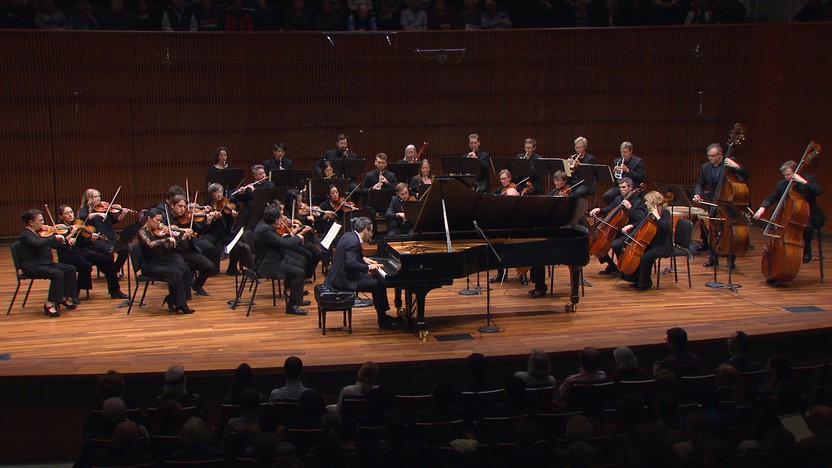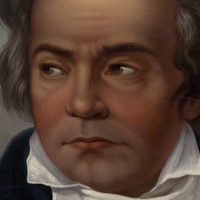Jonathan Biss Plays Beethoven’s Third Piano Concerto

Sponsored By
- March 16, 2019


Sponsored By


Ludwig van Beethoven, a man of big ideas and unbridled ambition, was naturally drawn to the grandest platform available to composers of his era: the operatic stage. Despite his best efforts, he never gained traction as an opera composer, with his one major effort, Leonore, landing as a flop in 1805. It took him nine years to get it staged again, in a revised version titled Fidelio, and all that time he was desperate for other routes back to the theater.
One strategy he tried was taking it upon himself to write an overture for a play that had enjoyed a successful run five years earlier, Heinrich Joseph von Collin’s Coriolan. A patron arranged for a private staging of the play, prefaced by the new overture, but the ploy to show off Beethoven’s theatrical chops failed to spark any new opportunity, and the play itself faded back into obscurity, leaving the Coriolan Overture as a worthy addition to the concert repertoire.
Coriolan follows a Roman general who defects to the enemy camp and raises an army against Rome, reaching the gates of the city before his mother convinces him to stop. The choice of key for the overture, C minor, foreshadows the fateful Fifth Symphony that Beethoven composed the next year, and like that symphony, the Coriolan Overture generates its power from the most compact material. The signature motive here is a drawn-out C that bursts into a short, explosive chord. The unresolved harmonies, like hanging questions, suggest a battle waging within the protagonist’s own conscience. After a developmental sequence of brittle motives over a running bass line and a return of the opening material, a final whiff of the sweet counter-theme gives way to even more brutal chords and pauses. The last phrases bow out quietly, ending with barren plucks on the keynote.
Aaron Grad ©2024

Watermark is woven from strands and patches and patterns of Beethoven's Third Piano Concerto. At times the connection is direct, as when the end of the first movement morphs into the final bars of Beethoven's own race to the cadence. At other points there is a more oblique and subtle kind of illumination of Beethoven's approach to serenity and tragedy, in the mirroring of the harmonic shifts and textures in Beethoven’s Third Concerto. Throughout the writing process, I was always inspired by Jonathan Biss's artistry, listening constantly to his recordings of the Beethoven Sonatas and other works, and to his wise insight into this music. The title, Watermark, refers in one sense to the research done (by musicologist Alan Tyson) on Beethoven's manuscript paper to determine the dates of composition for the Third Concerto, and more broadly to the notion of the origin of a document being expressed and embedded in subtle ways, like fragments of older language peeking through a palimpsest.
— © Caroline Shaw
Caroline Shaw ©2018

Ludwig van Beethoven wrote most of the Third Piano Concerto in 1800, in advance of a major debut concert in Vienna, but he chose to play an earlier concerto instead. After a few more years of tinkering, he unveiled the new concerto on an 1803 program that also included the premiere of the Second Symphony. For the concerto, Beethoven performed off a hastily written score that, in the words of his page turner, contained “almost nothing but empty leaves; at the most, on one page or another a few Egyptian hieroglyphs wholly unintelligible to me were scribbled down to serve as clues for him.”
The concerto opens with a definitive statement from the strings countered by a questioning response from the winds. In line with the style that would come to dominate Beethoven’s “middle” period, these themes separate into essential fragments to be examined from all angles, with various rising triads, falling scales, and timpani-like alternations appearing in the foreground and background.
The first E-major chord of the central Largo could hardly be more alien, or more luminous. The movement continues as a study in contradictions: humble yet ornate, foreign yet familiar, slow yet restless. A striking exchange occurs when the flute and bassoon trade childlike melodies over a simple plucked background, while the piano issues gusts of sound blurred by the sustain pedal.
The finale returns to the home key with a theme that lands heavily on an unresolved A-flat: the very same pitch that, in a different guise, defined the bright harmonies of the slow movement. (On the piano, A-flat is identical to G-sharp, the major third in the key of E.) Later in the movement, the same musical pun allows the slow movement’s key of E-major to return briefly to put a radiant new sheen on the finale’s main theme.
Aaron Grad ©2022
Get driving directions and find nearby parking.
Find dining options close to the venue.
View seating charts to find out where you'll be seating.
Get driving directions and find nearby parking.
Find dining options close to the venue.
View seating charts to find out where you'll be seating.
